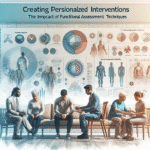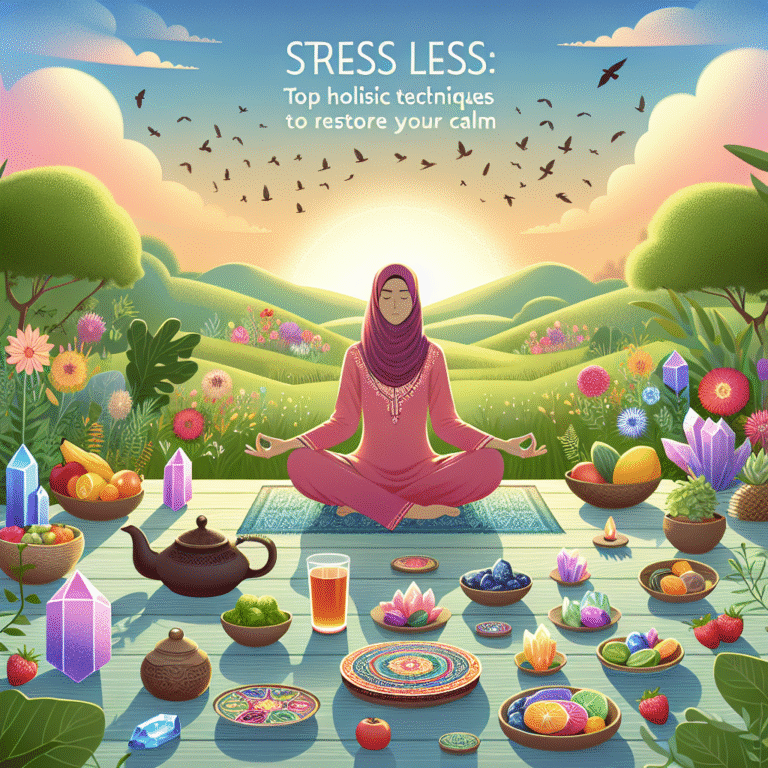
Tension Taming: How Progressive Muscle Relaxation Can Transform Your Stress Relief
Introduction
In our fast-paced world, stress has become an unwelcome companion. Balancing the demands of work, family, and self-care can feel overwhelming, leading to physical and emotional tension that diminishes our quality of life. What if there was a simple, effective method to help liberate us from this burden? Enter Progressive Muscle Relaxation (PMR): a powerful technique that promises to revolutionize your approach to stress relief. In this article, we will explore Tension Taming: How Progressive Muscle Relaxation Can Transform Your Stress Relief, unearthing its benefits, methods, and real-life applications.
Understanding Progressive Muscle Relaxation
What Is PMR?
Progressive Muscle Relaxation is a stress management technique that focuses on systematically tensing and then relaxing different muscle groups in the body. Developed by psychiatrist Edmund Jacobson in the early 20th century, PMR is based on the principle that physical relaxation can trigger mental calmness.
The Science Behind PMR
When we experience stress, our body’s natural response is to tense up. This tension is a physiological marker of stress and can lead to various health issues including anxiety, insomnia, and high blood pressure. By practicing PMR, individuals learn to recognize the difference between tension and relaxation, ultimately gaining greater control over their physical and emotional responses to stress.
Benefits of Progressive Muscle Relaxation
- Reduced Anxiety: PMR has been shown to decrease anxiety levels, leading to improved mental well-being.
- Improved Sleep: Many practitioners report better sleep patterns after incorporating PMR into their bedtime routine.
- Enhanced Focus: Regular practice can lead to better concentration and mental clarity.
- Pain Management: PMR can aid in the relief of chronic pain by promoting muscle relaxation.
How to Practice Progressive Muscle Relaxation
Step-by-Step Guide
- Find a Comfortable Position: Sit or lie down in a quiet environment.
- Close Your Eyes: Begin to focus on your breath, taking deep inhalations and exhalations.
- Tense Muscle Groups: Starting from the toes, tense the muscles as tightly as possible for about five seconds.
- Release and Relax: Immediately release the tension, allowing your muscles to relax completely and focus on the sensation of relaxation.
- Work Your Way Up: Repeat the tensing and relaxing process with each successive muscle group (e.g., calves, thighs, abdomen, etc.) until you’ve addressed the entire body, including facial muscles.
Frequency of Practice
To truly transform your stress relief, aim to practice PMR at least once a day, either as a standalone exercise or integrated into your existing wellness routine.
Real-World Applications of PMR
Case Study 1: Corporate Stress Management
In a recent study involving a corporate office in New York City, employees were introduced to PMR during regular stress management workshops. Over a six-month period, the company reported a 30% decrease in stress-related absenteeism. Employees noted a profound impact on their productivity and overall mental health.
Analysis: This case study highlights the effectiveness of implementing PMR in workplace settings. A stress-free work environment is not only beneficial for employees’ well-being but also for the company’s bottom line.
Case Study 2: PMR in Therapy
A clinical psychologist utilized PMR techniques for patients dealing with high levels of anxiety. Through weekly sessions focusing on PMR, patients reported significant reductions in anxiety levels, with several even tapering off prescribed medications.
Analysis: This emphasizes the role PMR can play in therapeutic settings. For individuals seeking non-pharmaceutical ways to manage anxiety, PMR offers a valuable tool that empowers patients.
Case Study 3: Sleep Improvement
A group of high-risk pregnant women participated in a PMR study to combat insomnia. Researchers found that those who practiced PMR experienced substantial improvements in sleep quality, directly enhancing their overall well-being during pregnancy.
Analysis: This case illustrates how PMR can cater to specific populations. Its utility goes beyond general stress relief, making it a versatile tool for diverse needs.
Creating a PMR Routine
Incorporating PMR into Your Daily Life
To maximize the benefits of PMR, build a routine that fits seamlessly into your lifestyle. Consider the following tips:
- Set a specific time: Morning or evening, consistency is key.
- Pair PMR with another habit: Try practicing after yoga or before bed.
- Use guided sessions: There are several apps and online resources to assist beginners.
Table: Sample PMR Routine
| Time | Activity |
|---|---|
| 7:00 AM | Morning PMR Session (10 Minutes) |
| 12:30 PM | Lunch Break (5 Minutes of Deep Breathing) |
| 6:00 PM | Evening Workout (follow with PMR, 15 Minutes) |
| 9:30 PM | Bedtime Ritual (PMR before Sleep, 10 Minutes) |
Troubleshooting Common PMR Challenges
Many individuals encounter hurdles when first starting PMR. Knowing how to navigate these challenges can enhance your practice.
Struggling to Relax?
Tip: Play soothing background music or use guided relaxation audio. Creating a calm atmosphere can make a difference.
Difficulty Focusing on Body Sensations
Tip: Start with shorter sessions. Gradually increase the duration as you build comfort with the technique.
Inconsistent Practice
Tip: Link PMR with existing habits. For instance, practice during your lunch break or before bed to create a routine.
Conclusion
Transforming stress relief through PMR is not just a possibility; it is an achievable reality. As we delve deeper into techniques like Progressive Muscle Relaxation, we unlock tools that help us manage our emotional and physical well-being. Tension Taming: How Progressive Muscle Relaxation Can Transform Your Stress Relief is more than a catchy phrase; it’s an invitation to reclaim our peace of mind in a chaotic world.
As you explore this powerful technique, remember that patience and consistency are essential. Each step you take on this journey of relaxation opens the door to a more serene, focused, and fulfilling existence. Embrace the transformation, and take control of your stress today!
FAQs
1. How long does it take to see results with PMR?
Answer: Some individuals may experience immediate relaxation after their first session, while others might need several weeks of consistent practice to notice significant changes.
2. Can PMR help with chronic pain?
Answer: Yes, PMR can be beneficial for individuals experiencing chronic pain, as it encourages relaxation throughout the body, potentially alleviating discomfort.
3. Is PMR suitable for everyone?
Answer: PMR is generally safe for most people. However, individuals with certain health conditions should consult a healthcare professional before starting.
4. How often should I practice PMR?
Answer: For optimal results, practicing PMR at least once a day is recommended. Even short sessions can be effective.
5. Can PMR be practiced anywhere?
Answer: Yes, PMR can be performed in various settings—at home, in the office, or even while traveling, making it a flexible stress relief tool.
By incorporating PMR into your routine, you can embrace a lifestyle marked by resilience against stress, ultimately leading to a healthier and happier you.
















